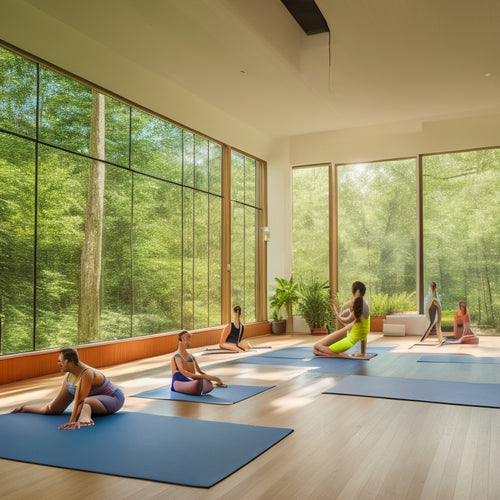
Unlock Your Dance Potential: The Ultimate Guide
Share
Begin your full dance potential journey by establishing a strong foundation through deliberate practice, self-assessment, and artistic expression. Hone technical skills, nurture emotional connections, and communicate captivating stories through movement. Establish clear objectives, monitor progress, and overcome challenges to achieve success. By embracing creativity, exploring different styles, and discovering your unique voice, you can surpass limitations and evoke strong emotions in your audience. As you initiate this transformative experience, unveil the secrets to unleashing your true dance potential and prepare to elevate your performances to new levels.
Key Takeaways
• Establish a strong foundation in dance through deliberate preparation, consistent practice, and valuable feedback to improve technique and expression.
• Connect with the music, story, and audience on an emotional level to deliver a captivating performance that conveys emotion and tells a story.
• Set specific, measurable, and achievable goals to track progress, overcome obstacles, and realize full potential as a dancer.
• Embrace creativity and self-expression by experimenting with different styles and techniques to develop a unique voice on stage.
• Focus on conveying emotional connection and storytelling through body language, ensuring a polished and engaging performance that resonates with the audience.
Preparation and Planning Strategies
To reveal your dance potential, it is important to establish a strong foundation through deliberate preparation and planning strategies. This process starts at the studio where you understand your dance, seek valuable feedback, and commit to consistent practice focused on technique, strength, and expression.
Effective practice techniques, such as setting specific goals and tracking progress, are essential to improving technique and building confidence. Additionally, a well-fitted costume is necessary for a polished performance, making costume fittings an integral part of the preparation process.
Mastering Performance and Expression
When you shift from rehearsal to performance, mastering the art of conveying emotion and telling a story through movement becomes vital, enabling your audience to connect with your dance on a deeper level.
As you take the stage, remember that your body language and fluidity are essential in conveying the emotional connection and storytelling.
To master performance and expression, focus on the following:
-
Emotional Connection: Connect with the music, the story, and your audience on an emotional level.
-
Body Language: Use intentional body language to convey the emotions and story, making it relatable to your audience.
-
Seamless Movement: Ensure a smooth flow between movements, creating a cohesive and engaging performance.
Achieving Success and Growth
Every dancer aims for success, and it is through intentional practice, self-assessment, and a readiness to learn that one can realize their full potential and achieve lasting growth. To achieve success, it is vital to set specific, measurable, and achievable goals, and to overcome obstacles that may hinder progress. Embracing creativity and self-expression is also paramount, as it allows dancers to connect with their inner artist and bring their unique voice to the stage.
| Key to Success | Actionable Tips |
|---|---|
| Setting Goals | Identify specific, measurable, and achievable goals |
| Overcoming Obstacles | Break down challenges into manageable tasks |
| Embracing Creativity | Experiment with different styles and techniques |
Frequently Asked Questions
How Do I Handle Stage Fright and Performance Anxiety?
To tackle stage fright and performance anxiety, employ breathing exercises to calm your nervous system, establish pre-performance rituals for focus, practice mental reframing to rewire negative thoughts, and utilize positive self-talk, visualization techniques to boost confidence and own the stage.
Can I Still Improve My Dance Skills if I'm Not Naturally Flexible?
'Even without innate flexibility, you can still unleash your dance potential! With consistent flexibility exercises and targeted muscle conditioning, you can increase your range of motion and master intricate movements, unleashing a world of expressive dance possibilities.'
What Are Some Common Dance Injuries and How Can I Prevent Them?
Dancers, beware of common injuries like shin splints, often caused by overtraining. Prevent them by incorporating gradual intensity increases, proper footwear, and regular stretching exercises into your routine, ensuring a healthy and thriving dance career.
How Do I Balance Dance With Other Hobbies and Responsibilities?
"Dancing queens, beware: juggling dance with other hobbies and responsibilities can be a delicate balancing act. Master the art of time management, scheduling conflicts, and prioritize your passions to avoid burnout and maintain your sparkle!"
What Are Some Ways to Stay Motivated and Avoid Burnout in Dance?
To stay motivated and avoid burnout, set specific, achievable goals, and share them with an accountability partner to foster a sense of responsibility and encouragement, ensuring a balanced and fulfilling dance journey.
Related Posts
-

Benefits of Wearing Activity Trackers Daily
Wearing an activity tracker daily can transform your fitness routine. You'll gain understanding into your daily steps...
-

The King Manual: Your Ultimate Knowledge Companion
The King Manual: Your Ultimate Knowledge Companion is an all-encompassing resource that opens up the power of knowled...
-

Essential Spandex Shorts for Yoga and Pilates
Essential spandex shorts are vital for your yoga and Pilates practice. Look for moisture-wicking technology to keep y...


